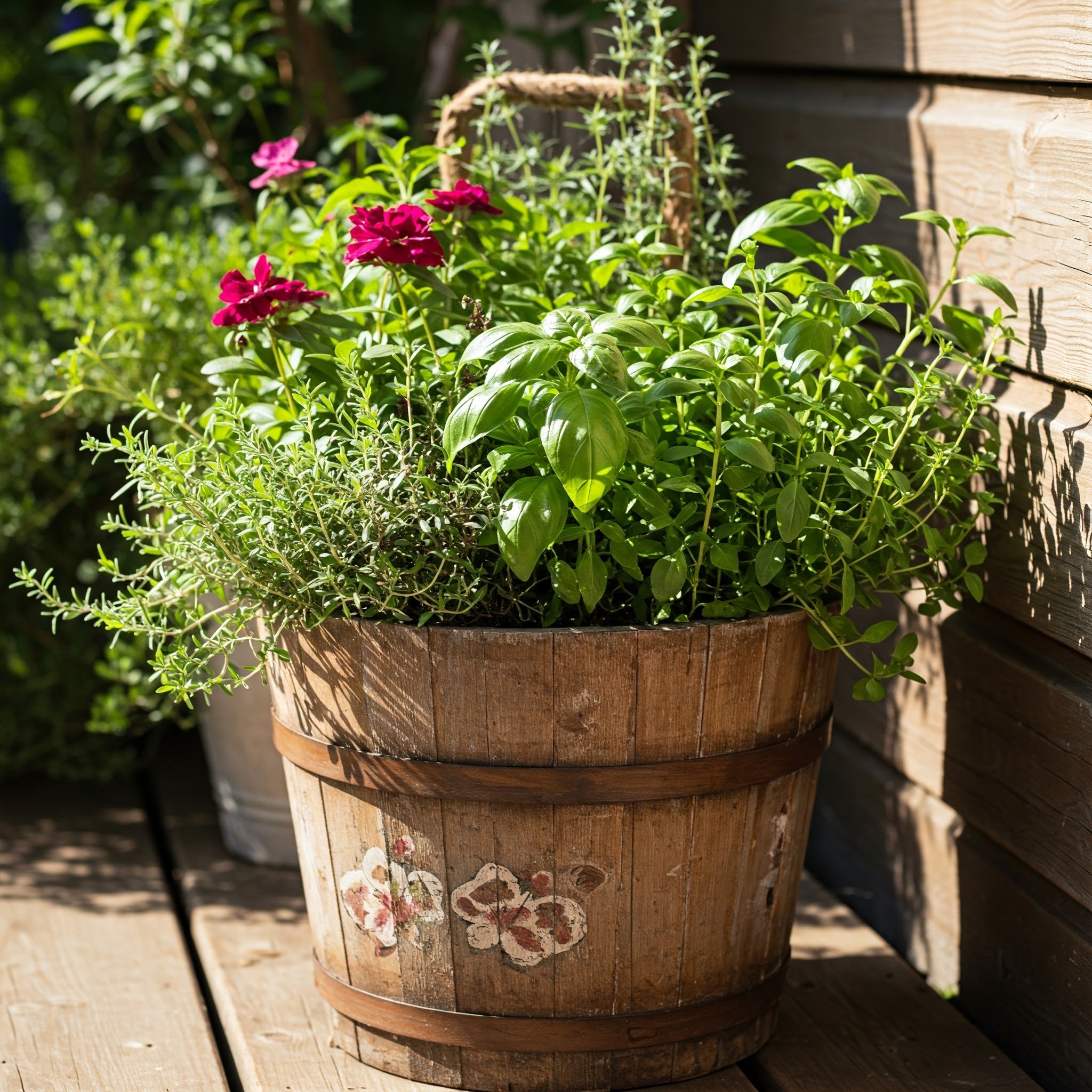How to Get Rid of English Ivy Without Harming Plants
Struggling with invasive English ivy but worried about your other plants? Learn how to get rid of English ivy without harming plants using these safe, eco-friendly strategies.
English ivy (Hedera helix) might seem like the perfect solution for ground cover or adding a little green charm to your walls. But as many gardeners have learned the hard way, this fast-growing vine can quickly go from charming to alarming. Once English ivy starts creeping across your yard or climbing your trees, it’s tough to control—and it can choke out your beloved plants if left unchecked.
But don’t panic! You don’t need to douse your garden in harmful chemicals to reclaim it. In this article, we’ll walk you through how to get rid of English ivy without harming plants. With a little patience, the right tools, and some tried-and-true techniques, you can banish this invasive plant while keeping the rest of your garden safe and sound.
Why Is English Ivy a Problem?
Before we dive into how to get rid of English ivy without harming plants, it’s worth understanding why this vine can be such a headache.
It Smothers Other Plants: English ivy grows fast—really fast. It can cover garden beds, trees, and shrubs, stealing sunlight, water, and nutrients from your other plants.
It Harms Trees: When ivy climbs up trees, it adds extra weight and can weaken the tree over time. It also blocks light from the leaves, interfering with photosynthesis.
It’s Tough to Remove: The plant’s roots are stubborn, and even a tiny piece left behind can sprout new growth. That’s why removal can be so frustrating!
How to Get Rid of English Ivy Without Harming Plants: Step-by-Step
Getting rid of English ivy might feel like a battle, but you don’t need harsh chemicals to win. Let’s break it down into manageable steps.
1. Gather Your Tools
You don’t need anything fancy to get started—just a few basics will do the trick.
Gardening gloves (ivy can irritate your skin)
Hand pruners or garden shears
A garden fork or trowel
A plastic tarp (optional)
Water spray bottle or hose
Mulch
Removing ivy or managing its growth requires the right tools to protect yourself and make the task easier. Start with gardening gloves, as ivy can cause skin irritation upon contact. Hand pruners or garden shears are essential for cutting through thick vines and trimming back growth. A garden fork or trowel helps loosen the roots, making removal more thorough. A plastic tarp can be useful for gathering clippings and debris, keeping your workspace tidy. Keep a spray bottle or hose handy to soften the soil and roots, which makes pulling ivy easier. After removal, applying mulch helps suppress regrowth and maintains the area. With these tools, you’ll be well-prepared to tackle ivy in your garden.
2. Cut the Ivy Off at the Source
If English ivy is growing on trees or shrubs, the first step is to stop it in its tracks.
Step 1: Use your pruners to cut the ivy vines at the base. This will separate the roots from the climbing vines.
Step 2: Carefully peel the ivy off the trees or shrubs. Be gentle—pulling too hard could damage the bark or the plants you want to keep.
Pro Tip: Don’t try to yank down vines higher than you can reach. Let the severed vines die off naturally and fall on their own.
3. Pull the Ivy by Hand
For ivy growing on the ground, manual removal is the safest method. It might take some elbow grease, but it’s worth it to avoid harming your plants.
Step 1: Start at the edges of the ivy patch and work your way in. Use your hands or a garden fork to loosen the roots.
Step 2: Pull slowly and gently, trying to get as much of the root system as possible. Any roots left behind could regrow.
Step 3: Place the ivy you’ve removed on a tarp or in a trash bag to prevent it from re-rooting elsewhere.
4. Water the Area to Soften the Soil
If you’re dealing with dry or compacted soil, watering the area before pulling the ivy can make your job easier.
Step 1: Use a hose or spray bottle to moisten the soil where the ivy is growing.
Step 2: Wait 15-20 minutes to let the water soak in, making it easier to pull out the roots without breaking them.
5. Use Mulch to Prevent Regrowth
Even after you’ve pulled out the ivy, those sneaky roots can sometimes make a comeback. That’s where mulch comes in.
Step 1: Cover the cleared area with a thick layer of mulch. This will block sunlight and make it harder for any remaining ivy to sprout.
Step 2: Keep an eye on the area for new shoots and pull them as soon as you see them.
6. Try the Smothering Method (If Needed)
For particularly stubborn ivy patches, smothering might be your best bet.
Step 1: After pulling the ivy, cover the area with a plastic tarp or cardboard.
Step 2: Weigh down the edges to keep the tarp in place. Leave it there for several weeks to starve any remaining roots of sunlight.
Step 3: After a few weeks, remove the tarp and recheck the area for new growth.
Mistakes to Avoid When Removing English Ivy
Now that you know how to get rid of English ivy without harming plants, let’s talk about a few common mistakes to avoid:
Leaving Roots Behind: Even small pieces of root can regrow, so be thorough.
Using Herbicides Recklessly: Some herbicides can harm surrounding plants and pollute the soil. Stick to manual methods when possible.
Ignoring New Growth: Ivy is persistent! Check the area regularly and pull any new sprouts as soon as they appear.
When dealing with ivy, it’s important to be thorough and careful to prevent it from coming back. One of the most common mistakes is leaving behind pieces of roots, as even small fragments can quickly regrow. Taking the time to remove the entire root system ensures the ivy won’t reclaim the space. While herbicides may seem like a quick fix, using them recklessly can harm nearby plants and contaminate the soil, so it’s often best to stick to manual removal methods. Ivy is persistent, so ignoring new growth can undo your hard work. Regularly check the area and pull any sprouts as soon as they appear to keep the ivy under control.
Alternatives to English Ivy
If you’re looking to replace the ivy with something less invasive, here are a few ground cover options that won’t overrun your garden:
Creeping Thyme: A fragrant, low-growing herb that attracts pollinators.
Ajuga (Bugleweed): This plant offers beautiful foliage and spreads without becoming invasive.
Pachysandra: A shade-loving ground cover that won’t smother your other plants.
Vinca (Periwinkle): Produces lovely purple flowers and grows well in shady areas.
Ground covers are a great way to fill in empty spaces, prevent weeds, and add beauty to your garden, and there are plenty of options to choose from. Creeping thyme is a fragrant, low-growing herb that not only smells amazing but also attracts pollinators like bees and butterflies. For those looking for vibrant foliage, ajuga (also known as bugleweed) spreads easily without becoming invasive. Pachysandra is perfect for shady areas, offering lush greenery without overwhelming nearby plants. If you want a pop of color, vinca (periwinkle) produces beautiful purple flowers and thrives in low-light conditions. These ground covers are easy to maintain and add charm to any garden setting.
Conclusion
Dealing with invasive ivy can feel like a never-ending battle, but with the right approach, you can win the war without hurting the rest of your garden. Now that you know how to get rid of English ivy without harming plants, you’ve got everything you need to take action. Just remember—patience is your best friend. It may take a little time and effort, but with consistent care, you’ll reclaim your space and keep your garden thriving.
So, put on those gardening gloves, grab your pruners, and get to work. Your ivy-free garden awaits!
Frequently Asked Questions
1. Can I compost English ivy after pulling it?
It’s not recommended. Ivy can re-root from small pieces, even in a compost pile, so it’s safer to dispose of it in the trash.
2. How long does it take to remove English ivy completely?
It depends on the size of the area and how established the ivy is. Plan for a few sessions of pulling and regular follow-up to keep it from returning.
3. Is there a specific time of year that’s best for removing ivy?
Early spring or fall is ideal. The weather is cooler, and the soil is often easier to work with.
4. Will removing ivy harm my soil or other plants?
Not if you’re careful! Use the hand-pulling method around other plants and follow up with mulch to keep the soil healthy.
5. What should I do if the ivy keeps coming back?
Persistence is key. Keep pulling new growth and consider using the smothering method for especially stubborn areas.
































